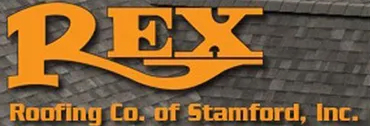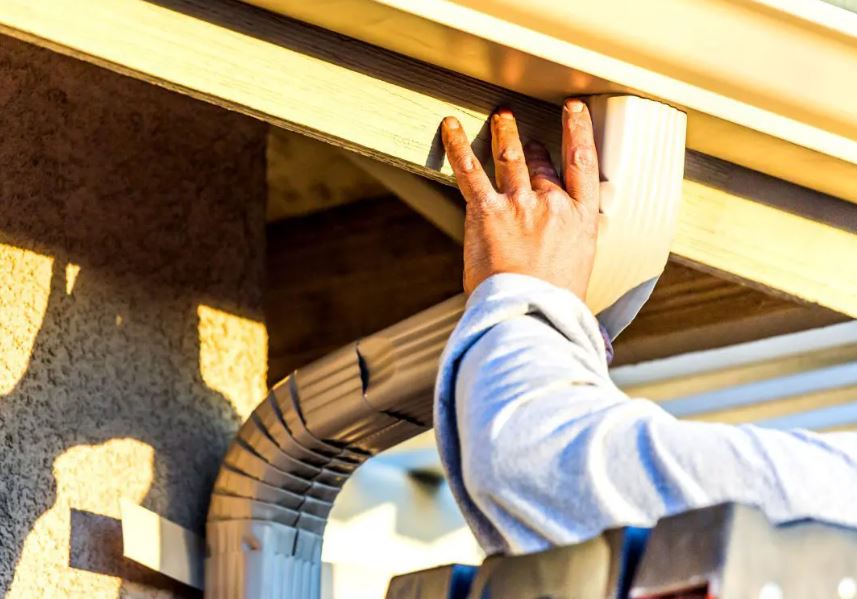Did you know the most popular and trending option in the commercial roofing market of this decade? Yes, you guessed it right! It is single-ply membrane roofing. However, we understand that it can be difficult for you when deciding on a Roofing Contractor in Stamford CT system. It’s even a tough nut to crack on for homeowners and roofing managers. But you may not realize that this era is all about innovative and user-friendly solutions. In this exploration, we will empower you with valuable insights about single-ply membrane roofings and their different types. You will surely have a clear idea by the end, of what options are there and what will suit you the best.
What is single-ply membrane roofing?
A single-ply membrane roofing comprises a single layer of weatherproof and synthetic materials, covering the roof of the building. It serves the purpose of separating the interior fo the building from the exterior conditions of the environment. It is specifically designed for only low-sloped roofs, commonly known as flat roofs. So, it cannot be opted for this for pitched roofs.
Installation Methods:
Single-ply membranes can be installed in three main ways:
- Ballasted (secured with weights): Involves laying down the membrane and covering it with gravel-like materials.
- Adhered with adhesives: Bonds the membrane to the cover board by using adhesives.
- Mechanically fastened: Mechanically secures membranes with metal screws and plates along the seams of the sheet.
Why single-ply roofing is a good option for you?
- Installation of a single-ply Roofing Contractor in Stamford CT system is quite easy. It does not even require a day lest there is no disruption of other activities.
- The roofing membranes come in various grades and varying thicknesses. So, there is no hassle of matching your specific building requirement.
- Single-ply membrane roofing resists the damage of UV rays and other environmental conditions in contrast to other systems.
- Strict guidelines are followed to design it to be user and environmentally friendly.
- It is the best option to get cool roofing, giving optimal performance and reducing energy usage in the warmer months in one go.
The Different Types of Membrane Roofings:
Single-ply roofing systems can be formed through thermoset, thermoplastic, or bituminous materials. Delve into these roofing systems below and explore the kinds of materials they offer for your buildings:
- THERMOSET MEMBRANES:
Thermoset membranes are formed from different synthetic rubbers. The word set in ‘thermoset’ refers to the hardening of the material when heated. Thermoset-based materials form irreversible chemical bonds to form cross-linkages. Once hardened, it is impossible to melt without destroying its original form.
Thermoplastic materials available in the market for single-ply Roofing Contractor in Stamford CT include Epichlorohydrin (ECH), Neoprene (CR), Polyisobutylene (PIB), EPDM (Ethylene Propylene Diene Monomer) and hyphalon. Out of which the most commonly used is:
EPDM (Ethylene Propylene Diene Monomer):
A high-quality rubber membrane that can be used for various low-sloped roofs of commercial and industrial properties. This material is made up of ethylene and propylene originating from natural gas and oil, thus relatively adaptable to diverse environmental conditions.
Key Features:
- Color: Mainly black but white is also available
- Attachment Methods: Mechanical attachment, adhesives, or ballast
- Width: About 7.5-50 feet wide.
- Thickness: About 40-70mm thick.
A good choice because:
- Provides excellent resistance to UV rays, heat, ozone, and other environmental conditions.
- Long-lasting durability contrasts with other single-ply roof materials
- EPDM Sheets are available in various sizes and ranges.
- THERMOPLASTIC MEMBRANES:
Thermoplastic membranes are formed from synthetic polymers that soften with rising temperatures. They harden again as temperatures drop and can be returned to their original structure when cooled. It is because of this specific feature they have higher tensile strength than thermoset membranes. In addition, Thermoplastics are more resistant to tears than thermoset membranes because they use a polyester ‘scrim’ which makes them stable. The most common categories of thermoplastic membranes include Thermoplastic Olefin (TPO) and Polyvinyl Chloride (PVC). Let’s look at what these materials offer:
Thermoplastic Olefin (TPO):
These are surely the most popular in the market these days. It is an excellent choice for homeowners who have ideal roofs. This material is produced through extrusion–coating techniques and by lamination. It is a mixture of polypropylene and ethylene propylene polymers which are reinforced by ester.
Key Features:
- Color: White and Gray are available.
- Installation Methods: Mechanical attachment, adhesives, or ballast
- Width: About 6-12 feet wide.
- Thickness: About 40-100mm thick.
A good choice because:
- Highly durable material
- Even though available colors are white allows for a colorant.
- Seams are heat welded through hot air
- More resistant to punctures and tears than thermosets
Polyvinyl Chloride (PVC):
PVC was widely used initially until TPO gained popularity and more users. However, it remains to be the third most popular membrane after EPDM and TPO. Individual sheets are installed by joining together with heat-welded seams.
Key Features:
- Color: White, Gray, and tan is available.
- Installation Methods: Mechanical attachment or through adhesives.
- Thickness: Available in 45, 60 and 80-mil thickness.
What setRoofing Contractor in Stamford CTs it apart from other materials?
- Highly reflective, minimizes heat absorption in the building.
- It is a fire-resistant material
- Easy to install and is a budget-friendly option.
- Can last for decades if maintained and installed correctly.
- Resist foot traffic better compared to other single-ply systems.
- MODIFIED BITUMEN MEMBRANES:
These membranes blend asphalt with modifiers and reinforcement materials, making them a durable ‘sandwiched’ Roofing Contractor in Stamford CT option. It is less popular than EPDM, and TPO membranes. These membranes are known for their affordability and ease of installation. However, their shorter lifespan compared to advanced roofing materials like PVC or TPO makes them less competitive for larger commercial roofs. There are mainly two types::
- SBS (Styrene butadiene styrene):
It offers flexibility and can be installed with hot asphalt or adhesive. It is quite easy to apply in the case of DIY projects. It gives asphalt a rubber-like quality.
- APP (Atactic polypropylene):
It is modified using plastic and heat-welded or torch-applied for enhanced durability. It gives asphalt a plastic-like quality.
Cost Considerations:
The average pricing of single-ply membrane roofs for a 20,000 sq. foot area, typically ranges from $3.50 to $7.50 per square foot for materials and labor. Several factors impact the cost of a commercial roof, affecting its durability and performance. To ensure you get the best value, consider these key factors:
- Roof size
- Roof accessibility
- Existing roof condition
- Insulation and Membrane Type
- Roof penetrations
- Installation method
- Warranty type
The Wrap-up!
Single-ply membrane systems are the best option for your flat roof be it a commercial or an industrial building. Offering long-lasting durability, strength, and resistance to damage will elevate your Roofing Contractor in Stamford CT experience to new heights. So what are you waiting for? Invest in your roofings by contacting Roofing in Connecticut. We understand the hassle of sifting through numerous options and the pressure of making the right choice. Our team of experts is here to carry out a quick inspection of your roof and provide you with customized single-ply membranes just perfect for your buildings.
;;;;;



